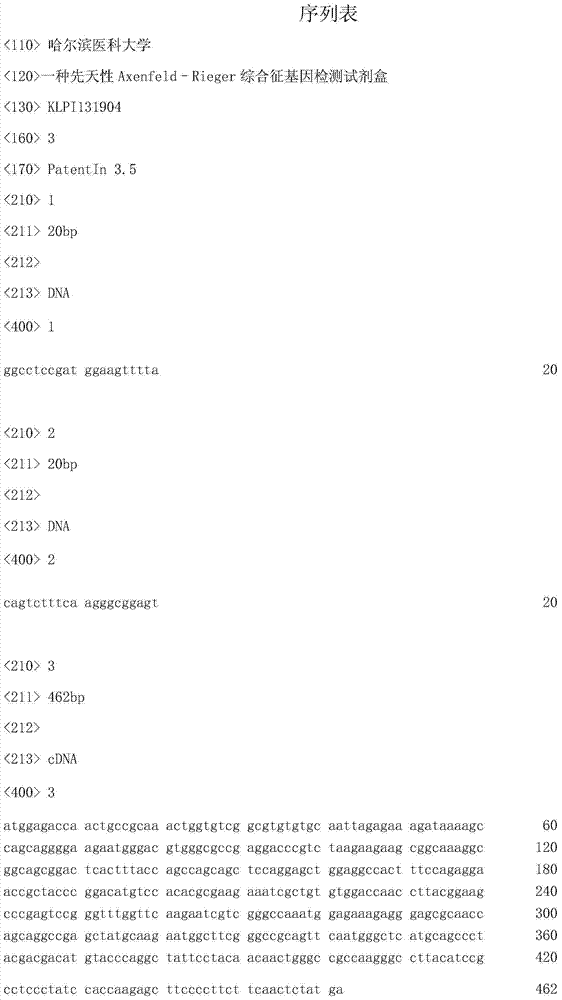A genetic detection kit for congenital axenfeld–rieger syndrome
A detection kit and gene detection technology, applied in the direction of determination/inspection of microorganisms, biochemical equipment and methods, etc., can solve the problem of no uniform detection method for congenital Axenfeld-Rieger syndrome, and achieve low cost, simple operation, direct result
- Summary
- Abstract
- Description
- Claims
- Application Information
AI Technical Summary
Problems solved by technology
Method used
Image
Examples
Embodiment 1
[0033] Embodiment 1 Congenital Axenfeld-Rieger syndrome gene detection kit of the present invention
[0034] 1. Extraction of DNA
[0035] (1) Add 1ml of cell lysate to 500μl of anticoagulated blood, mix well, and centrifuge at 3000rpm for 5min;
[0036] (2) Repeat step (1) until all the red blood cells are broken, and take the cell pellet for later use;
[0037] (3) Add 300 μl of STE and 20 μl of 20% SDS to the cell pellet, mix well, shake, add 15 μl of proteinase K (10 mg / ml), and place in a water bath at 50°C overnight (12-16 hours);
[0038] (4) Take out the sample from the water bath, add 100 μl saturated NaCl (6mol / L), shake, and a white precipitate can be seen, centrifuge at 5000rpm for 5min;
[0039] (5) Transfer the supernatant to another clean centrifuge tube, add an equal volume of phenol / chloroform / isoamyl alcohol (the volume ratio of phenol, chloroform, and isoamyl alcohol is 25:24:1), shake, 5000rpm Centrifuge for 8 minutes; add 3 times the volume of cold abso...
PUM
 Login to View More
Login to View More Abstract
Description
Claims
Application Information
 Login to View More
Login to View More - R&D Engineer
- R&D Manager
- IP Professional
- Industry Leading Data Capabilities
- Powerful AI technology
- Patent DNA Extraction
Browse by: Latest US Patents, China's latest patents, Technical Efficacy Thesaurus, Application Domain, Technology Topic, Popular Technical Reports.
© 2024 PatSnap. All rights reserved.Legal|Privacy policy|Modern Slavery Act Transparency Statement|Sitemap|About US| Contact US: help@patsnap.com









